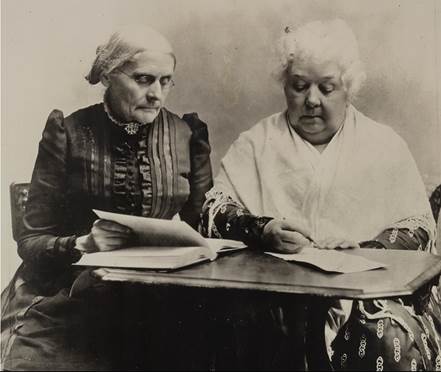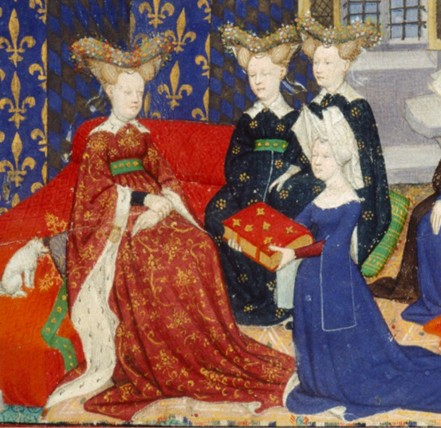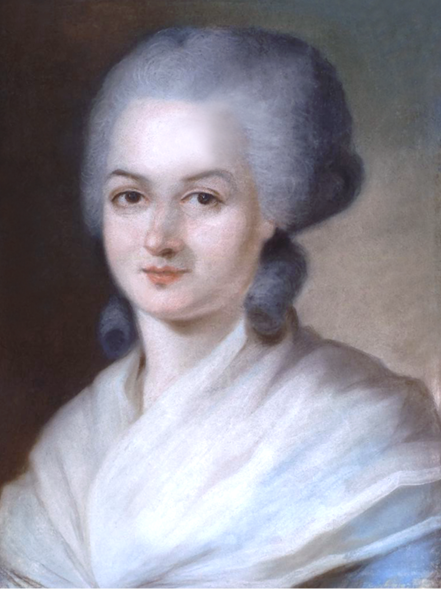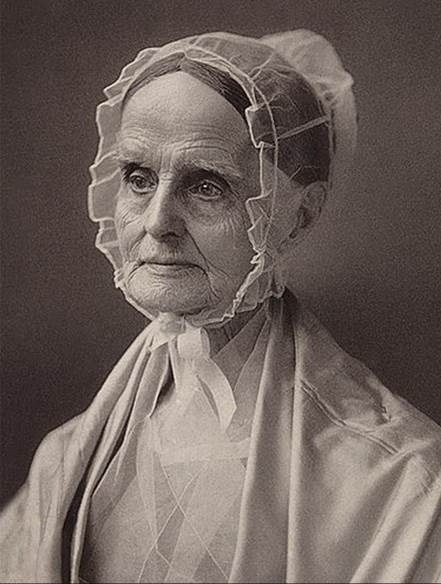Not unlike slaves, women were also often considered “lesser people.” Across the world, it was often assumed they were less capable of rational thought and, through their seductive powers, could ruin men’s lives. The first woman to systematically speak out against these accusations was Christine de Pizan, in the 15th century, who wrote a book in which she set out to prove men wrong by presenting the lives of remarkable women.
Women also often did not have the same opportunities as men. They were not allowed to vote, and often couldn’t hold office, speak in public, own or inherit property, sue in court, enter professions and educational institutions, divorce their husbands, and so on. Opposition to this inequality slowly started to form in the 17th century. In this century, British Quakers famously made the case for the equality of the sexes and allowed women to take equal part in their congregations. The 17th century also saw the rise of secular feminism in Britain, which aimed mostly at allowing women to access educational institutions.
During the French Revolution, some isolated activists came to demand equal rights for women. The greatest of these proponents was Olympe de Gouges, who wrote the Declaration of the Rights of Women as an alternative to the Declaration of the Rights of Men.
It took until the 19th century for gender activism to turn into a comprehensive and effective movement. Instrumental here were American women who had often earlier fought for the abolition of slavery. The first true success, however, came in New Zealand, where women first received the right to vote.
Christine de Pizan
During the Middle Ages, it was widely believed that Eve, the first woman, had been chiefly responsible for the fall of humanity—and thus was the cause of all suffering in the world. As a result, women were often looked at with suspicion. This image was also confirmed by the little Greek “science” medieval scholars possessed, which suggested that males had more of the Aristotelian quality “hot,” which was deemed superior, while females had more of the quality “wet,” which caused them to be unstable. There were a few positive role models as well, such as the Virgin Mary, various female saints, and pious nuns. Occasionally, an influential philosopher had also said something positive about women. Saint Augustine, for instance, had argued that women were equally capable of rational thought. But overall, the medieval view of women was negative.
Fig. 561 – Cristine de Pizan lecturing, from The Book of Queens (c. 1410) (British Library)
Fig. 562 – Cristine de Pizan presenting her book to Isabeau of Bavaria, from the same text.
Christine de Pizan (c. 1364-1430), a woman of Italian birth who lived in France in the Late Middle Ages, was possibly the first woman to systematically defend womanhood against these accusations. In The Book of the City of Ladies (1405), which was well received during her lifetime, she celebrated the lives of remarkable women from the past, hoping their stories would instill self-worth in her female readers. The book is framed around an autobiographical story. We find Christine reading a work by a cleric named Matheolus (13th century), who vilified women for making men’s lives a misery. Initially, Christine believed his arguments, making her drop into a state of despair for being a member of the female sex. She added:
Given that I could scarcely find a moral work by any author which didn’t devote some chapter or paragraph to attacking the female sex, I had to accept their unfavorable opinion of women since it was unlikely that so many learned men, who seemed to be endowed with such intelligence and insight into all things could possibly have lied on so many different occasions. […] Thus I preferred to give more weight to what others said than to trust my own judgment and experience. [368]
But then three Virtues appeared—Reason, Rectitude, and Justice—who set out to correct her negative views on women. These Virtues informed her she had been chosen by God to write a book which would be a city to house virtuous ladies and to protect them from “so many wicked insults about women and their behavior:”
My ladies, see how these men assail you on all sides and accuse you of every vice imaginable. Prove them all wrong by showing how principled you are and refute the criticisms they make of you by behaving morally. [368]
The Virtues convinced her that womanhood was not uniquely tied to sinfulness, as some theologians had claimed. Instead, both men and women are equally capable of both sin and morality.
In her final work, Pizan defended an illustrious woman of her own day, Jeanne d’Arc (c. 1412–1431), who came to lead the French troops to victory against the English at the age of just seventeen. Two years later, when Christine had already passed away, Jeanne d’Arc was captured by the English on French soil and put on trial for accusations of heresy. The charges included blaspheming by wearing men’s clothes, acting upon visions that were demonic, and refusing to submit her words and deeds to the judgment of the church. She was declared guilty and burned at the stake.
Although ahead of her time, Christine de Pizan was far from a modern feminist. For instance, she never demanded equality of the sexes or equal access to education. In fact, in another work, she advised women to accept their lot with patience and to submit to male control. Her point was just to refute the unnecessary and harmful attacks on women.
Early women’s rights activists in Britain
The Quakers of 17th-century England, who had also played an important role in ending slavery, also promoted the equality of men and women. From the 1640s, they allowed women to preach and debate in their congregations. Quaker women were also allowed to become administrators and could vote on matters of Church business. In the 1670s, the Quaker Margaret Fell (1614–1702) wrote Women’s Speaking Justified in which she defended the practice, stating:
Those that speak against […] the spirit of the Lord speaking in a woman, simply by reason of her sex […] speak against Christ and his church. [369]
Secular feminists in England, although less organized, also appeared around the same time. They mainly advocated giving women equal access to education, which would allow them to prove that women were just as intelligent and capable as men. The French writer Marie de Gournay (1565–1645) wrote The Equality of Men and Women (1622) in which she argued that women should be educated and rejected the claim that women had an inferior intellect. An anonymous work from 1640 called The Woman’s Sharpe Revenge argued that women’s exclusion from learning was “devised by men to secure their own continued domination.” [369]
In the 1650s, the writer, philosopher, and scientist Margaret Cavendish (1623–1673) also advocated for women’s education. She complained that “all heroic actions, public employments, powerful governments, and eloquent pleadings are denied our sex.” Instead, women were “kept like birds in cages to hop up and down in our houses.” This was unfair, she claimed, since women “have as clear an understanding as men,” if only “we were bred in schools to mature our brains.” As a scientist, Cavendish became the first woman to attend a meeting at the Royal Society of London. When she died in 1674, she was buried in Westminster Abbey.
Fig. 563 –Margaret Cavendish and her husband (17th century) (Gemaldegalerie, Germany)
Mary Astell (1666–1731), perhaps the most outspoken feminist of the century, expressed her frustrations on how difficult it was for a woman to use the full range of her talents and satisfy her ambitions. In a letter to the Archbishop of Canterbury, she stated: “For since GOD has given Women as well as Men intelligent Souls, how should they be forbidden to improve them?” In 1694, she wrote A Serious Proposal to the Ladies, in which she urged women to think for themselves and to take themselves seriously. In Thoughts on Education, she too argued that women were just as capable as men, except that they often lacked education.
The French Revolution and women’s rights
The proponents of the French Revolution, who championed the rights of men, had little to say about female rights. There were, however, a few exceptions. An early proponent of gender equality was Marquis de Condorcet (1743–1794). In 1790, he published an essay entitled On Giving Women the Right to Citizenship. In this article, he reminded his readers that men had natural rights because they were “feeling beings, capable of acquiring moral ideas and of reasoning about these ideas,” but then argued that women had these same characteristics and were therefore deserving of the same rights, including the right to vote. While many people at the time argued that women did not have the mental capacity to be informed voters, he argued that any disparities in intellect were caused by their exclusion from education. Condorcet could not convince his contemporaries, however, for when the issue of women’s suffrage came before the National Convention, it didn’t stand a chance.
Fig. 564 – The front cover of A Serious Proposal to the Ladies by Mary Astell (1694)
The most important and daring early feminist was the playwright and activist Olympe de Gouges (1748–1793), who also lived during the time of the French Revolution. In 1788, she had caused controversy when she opposed slavery in her play The Slavery of the Blacks. In 1791, in response to the French Declaration of the Rights of Man and Citizen, she claimed that the same natural rights should be extended to women. In protest, she wrote her own version of the document, which she called Declaration of the Rights of Woman and the Female Citizen [370], in which she boldly stated: “Woman is born free and remains equal to man in rights.” Women, too, she reasoned, should be able to run for political office, for as women have “the right to mount the scaffold, so she should have the right equally to mount the tribune.” [136] The start of her work mirrors the original declaration, but now called for women to form a National Assembly to declare the sacred rights of women:
Mothers, daughters, sisters, female representatives of the nation ask to be constituted as a national assembly. Considering that ignorance, neglect, or contempt for the rights of woman are the sole causes of public misfortunes and governmental corruption, they have resolved to set forth in a solemn declaration the natural, inalienable, and sacred rights of woman. [370]
She ended the document with:
Woman, wake up; the alarm bell of reason is being heard throughout the whole universe; recognize your rights. [...] Oh, women, women! When will you cease to be blind? What advantages have you received from the Revolution? [...] Whatever the barriers set up against you, it is in your power to overcome them; you only have to want it. [370]
Fig. 565 – Olympe de Gouges, by Alexander Kucharsky (18th century) (Bonarov, CC BY-SA 4.0)
Politically, Olympe also made all the right choices. She supported the moderate Girondins and objected to Louis XVI’s execution. As a result, she also would not survive the Terror. She stood trial for publishing a pamphlet titled The Three Urns, or the Welfare of the Motherland, in which she pleaded for “a decent government” and “a stop to assassinations and the suffering […] for merely holding opposing views.” She continued: “It is time for death to rest and for anarchy to return to the underworld.” [371] She was found guilty of seditious behavior and for attempting to reinstate the monarchy and was sentenced to the guillotine.
Early feminism in America
It took until the 19th century for gender activism to turn into a full-blown movement. Interestingly, many of the women’s rights activists from this period were also involved in the abolitionist movement. This includes the aforementioned William Lloyd Garrison (1805–1879). Another example is Abby Kelley Foster (1811–1887), who became the first woman to hold a position of leadership in the American Anti-Slavery Society (AASS). She also frequently gave lectures for the organization, which enraged a number of male members. It was at that moment that she realized women also weren’t free:
In striving to take his irons off, we found most surely that we were manacled ourselves. [372]
A similar situation befell the Quaker minister Lucretia Mott (1793–1880) and the activist Elizabeth Cady Stanton (1815–1902), who attended an anti-slavery conference in London, only to find they were not allowed to sit with the other delegates simply because they were women. They were horrified that even activists for equal rights didn’t regard them as fully human. In response, they organized the Seneca Falls Woman’s Rights Convention in New York in 1848, which was the first convention in world history devoted exclusively to the rights of women. The resulting Declaration of Sentiments, primarily written by Stanton, presented an updated version of the American Declaration of Independence:
We hold these truths to be self-evident: that all men and women are created equal. [373]
The document also listed a number of grievances, or “sentiments.” Among them we find:
- He has not ever permitted her to exercise her inalienable right to the elective franchise.
- He has compelled her to submit to laws, in the formation of which she had no voice.
- He has made her, if married, in the eye of the law, civilly dead.
- He has taken from her all right in property, even to the wages she earns.
- He has monopolized nearly all the profitable employments, and from those she is permitted to follow, she receives but a scanty remuneration.
- He closes against her all the avenues to wealth and distinction, which he considers most honorable to himself. As a teacher of theology, medicine, or law, she is not known.
The document concluded with:
Now, in view of this entire disfranchisement of one-half the people of this country, their social and religious degradation—in view of the unjust laws above mentioned, and because women do feel themselves aggrieved, oppressed, and fraudulently deprived of their most sacred rights, we insist that they have immediate admission to all the rights and privileges which belong to them as citizens of these United States.
Fig. 566 – Lucretia Mott (Library of Congress, United States)
 Fig.
567 – Susan B.
Anthony and Elizabeth Cady Stanton (Library of
Congress, United States)
Fig.
567 – Susan B.
Anthony and Elizabeth Cady Stanton (Library of
Congress, United States)
The first true success of the feminist movement occurred in New Zealand in 1893, when Kate Sheppard (1848–1934) organized a petition demanding the right to vote. The petition amassed 25,000 signatures and was over 270 meters long (earning it the name “monster” petition). Their efforts paid off when the Electoral Act became law that same year, making New Zealand the first country where women had the right to vote. Within a century, most of the world followed suit. American women had to wait until 1920, when the 19th Amendment was added to the Constitution.






